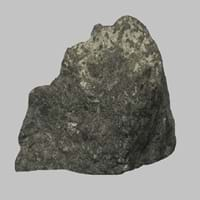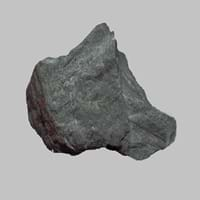Definition
Phonolite is an uncommon extrusive igneous rock volcanic rock of intermediate chemical composition between felsic and mafic
Taconite is a low-grade iron ore which belongs to sedimentary rock and containing about 27% iron and 51% silica
Origin
Unknown
Western Australia, Minnesota
Discoverer
Unknown
Newton Horace Winchell
Etymology
From the Greek meaning sounding stone because of the metallic sound it produces if an unfractured plate is hit
From the name of Taconic Mountains in New England
Class
Igneous Rocks
Sedimentary Rocks
Sub-Class
Durable Rock, Medium Hardness Rock
Durable Rock, Medium Hardness Rock
Group
Not Applicable
Not Applicable
Other Categories
Fine Grained Rock, Opaque Rock
Coarse Grained Rock, Opaque Rock
Texture
Granular
Banded, Trellis
Color
Brown, Buff, Cream, Green, Grey, Pink, White
Red, Reddish Brown
Durability
Durable
Durable
Scratch Resistant
Yes
Yes
Appearance
Banded and Foilated
Layered, Banded, Veined and Shiny
Interior Uses
Countertops, Decorative Aggregates, Flooring, Homes
Decorative Aggregates, Entryways, Flooring, Homes, Interior Decoration
Exterior Uses
As Building Stone, As Facing Stone, Garden Decoration, Office Buildings, Paving Stone
As Building Stone, Garden Decoration, Paving Stone
Other Architectural Uses
Curbing
Curbing
Construction Industry
As Dimension Stone, Cement Manufacture, Construction Aggregate, for Road Aggregate, Landscaping, Making natural cement, Manufacture of Magnesium and Dolomite Refractories, Production of Glass and Ceramics
As Dimension Stone, Used for flooring, stair treads, borders and window sills.
Medical Industry
Not Yet Used
Not Yet Used
Antiquity Uses
Artifacts, Monuments, Sculpture
Artifacts
Commercial Uses
Cemetery Markers, Creating Artwork
As a touchstone, Cemetery Markers, Creating Artwork
Types
Kenyte
Not Available
Features
Application of acids on the surface causes cloudy frosting, Available in Lots of Colors and Patterns, Dissolves in hydrochloric acid, Is one of the oldest rock
Is one of the oldest rock
Archaeological Significance
Famous Monuments
Data Not Available
Data Not Available
Famous Sculptures
Data Not Available
Data Not Available
Pictographs
Used
Not Used
Petroglyphs
Used
Not Used
Formation
Phonolite are formed due to alkaline igneous activities and are generally formed in thick continental crustal areas or in Cordilleran subduction zones.
Taconite is a type of sedimentary rock formed when a river carries or transports pieces of broken rock as it flows. When the river reaches a lake or sea, its load of transported rocks settles or deposits at the bottom of sea or lake.
Mineral Content
Albite, Amphibole, Biotite, Cancrinite, Feldspar, Hornblende, Plagioclase, Pyroxene, Sodalite
Hematite, Magnetite, Quartz
Compound Content
Aluminium Oxide, CaO, Iron(III) Oxide, FeO, Potassium Oxide, MgO, MnO, Sodium Oxide, Phosphorus Pentoxide, Silicon Dioxide, Titanium Dioxide
Fe, Iron(III) Oxide, Silicon Dioxide
Types of Metamorphism
Contact Metamorphism
Not Applicable
Types of Weathering
Chemical Weathering, Mechanical Weathering
Biological Weathering, Mechanical Weathering
Types of Erosion
Chemical Erosion, Coastal Erosion, Water Erosion, Wind Erosion
Chemical Erosion, Coastal Erosion, Glacier Erosion, Water Erosion, Wind Erosion
Grain Size
Fine Grained
Large and Coarse Grained
Fracture
Conchoidal to Uneven
Uneven, Splintery or Conchoidal
Porosity
Less Porous
Highly Porous
Luster
Greasy to Dull
Earthy
Compressive Strength
Not Available
Toughness
Not Available
1.5
Specific Gravity
2.6
5-5.3
Transparency
Translucent to Opaque
Translucent to Opaque
Density
2.6 g/cm3
Not Available
Specific Heat Capacity
Not Available
Resistance
Heat Resistant, Impact Resistant, Wear Resistant
Heat Resistant, Impact Resistant, Pressure Resistant, Wear Resistant
Deposits in Eastern Continents
Asia
Indonesia, Iran, Russia, Saudi Arabia, Sri Lanka, Taiwan, Thailand, Turkey, Turkmenistan, Vietnam
China, India, Iran, Iraq, Oman, Russia, Saudi Arabia, Taiwan, Thailand, Vietnam
Africa
Angola, Egypt, Madagascar, Namibia, Nigeria, South Africa
Kenya, Morocco, South Africa, Tanzania
Europe
Andorra, Finland, France, Germany, Great Britain, Italy, Norway, Portugal, Spain, Sweden
Austria, France, Greece, Italy, Malta, Poland, Portugal, Serbia, Spain, Sweden, United Kingdom
Others
Greenland
Greenland, Mid-Atlantic Ridge
Deposits in Western Continents
North America
Canada, USA
Canada, Mexico, USA
South America
Brazil, Chile, Colombia, Uruguay, Venezuela
Bolivia, Brazil
Deposits in Oceania Continent
Australia
New Zealand, Queensland, South Australia, Tasmania, Western Australia
New South Wales, Queensland, South Australia, Western Australia










